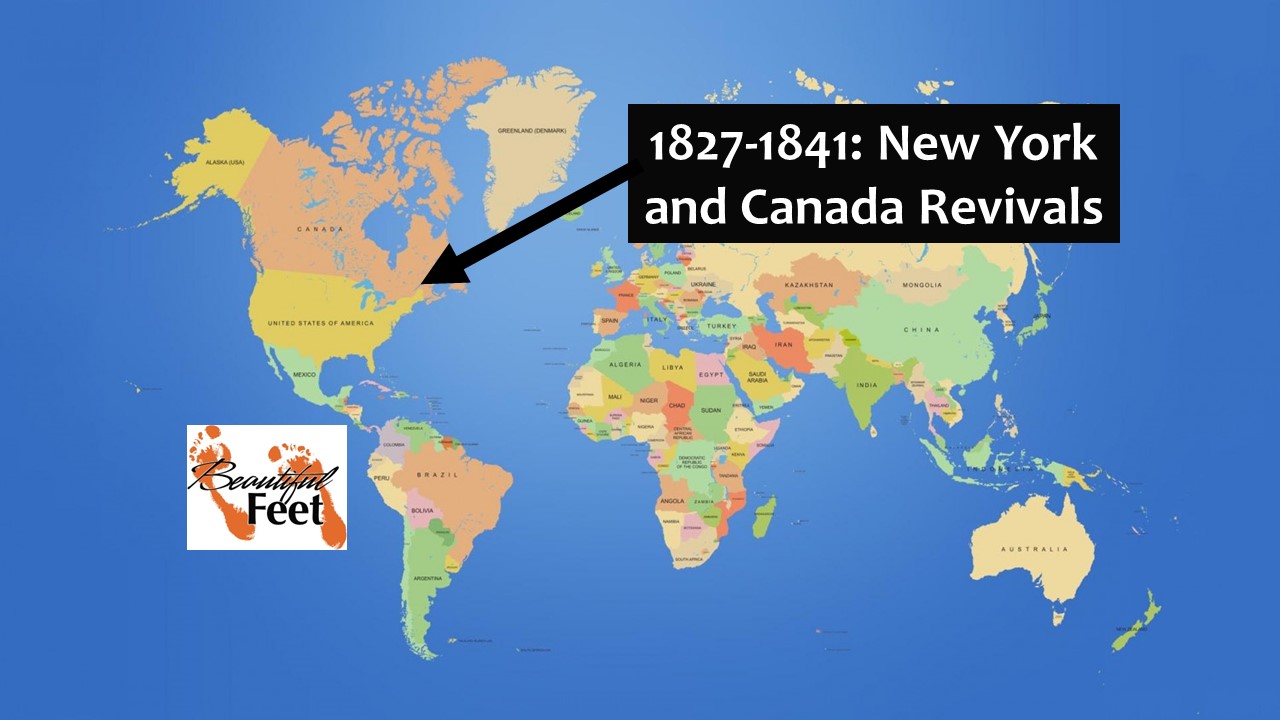
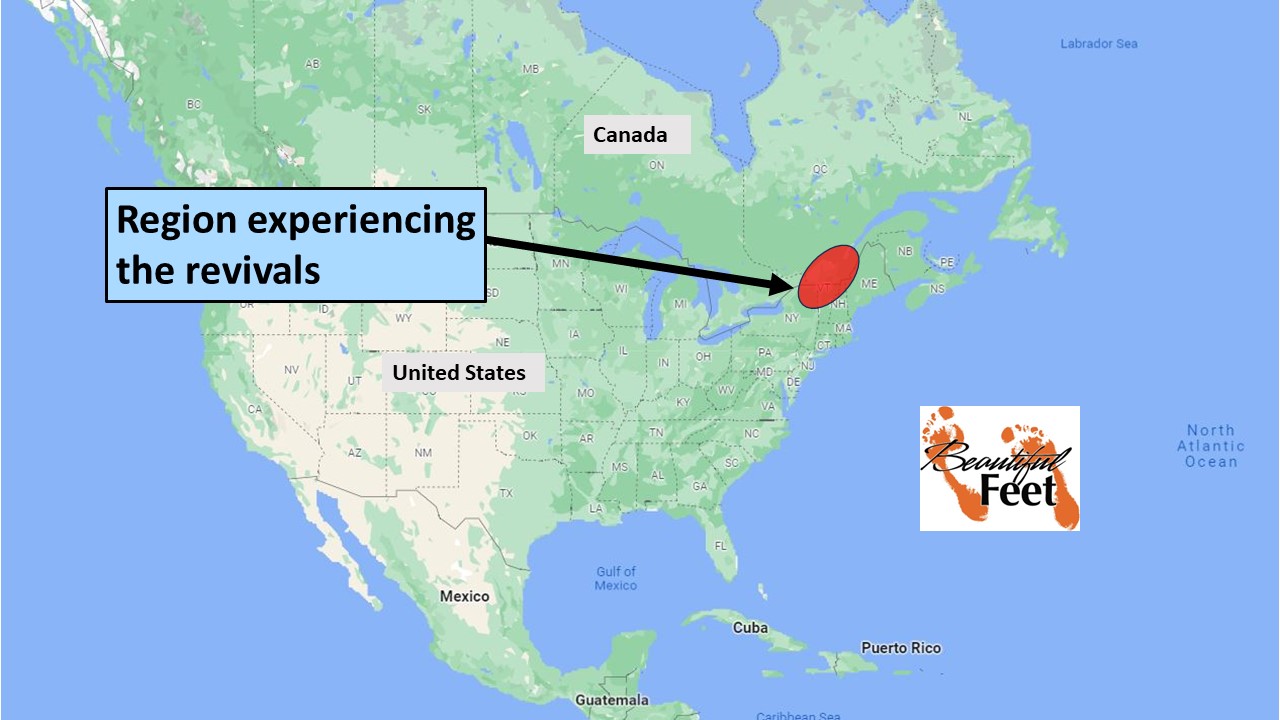 Introduction
Introduction
In the annals of history, there are those whose names may not appear prominently in the accounts of great revivalists, yet their impact on religious movements is undeniably profound. James Caughey, the evangelist of the 1800s, falls into this category. While not as widely recognized as some of his contemporaries, his influence on American Methodism and its expansion to Canada, Ireland, and England has left an indelible mark. Remarkably, his ministry has served as a pivotal influence on significant figures like William Booth, Phoebe Palmer (1857 Hamilton, Ontario Revival), and D. L. Moody (1872 London Revival), who all found inspiration in his approach.
Caughey’s ministry coincided with that of Charles Finney, though their sphere of influence differed: Finney predominantly impacted Presbyterian congregations, while Caughey focused on Methodists.
Caughey is particularly renowned for his transformative six-year ministry in Ireland and England from 1841 to 1847, during which an astounding 20,000 individuals underwent conversion. While this account primarily centers on Caughey’s impactful ministry in Canada, it also sets the stage for his later journey across the Atlantic.
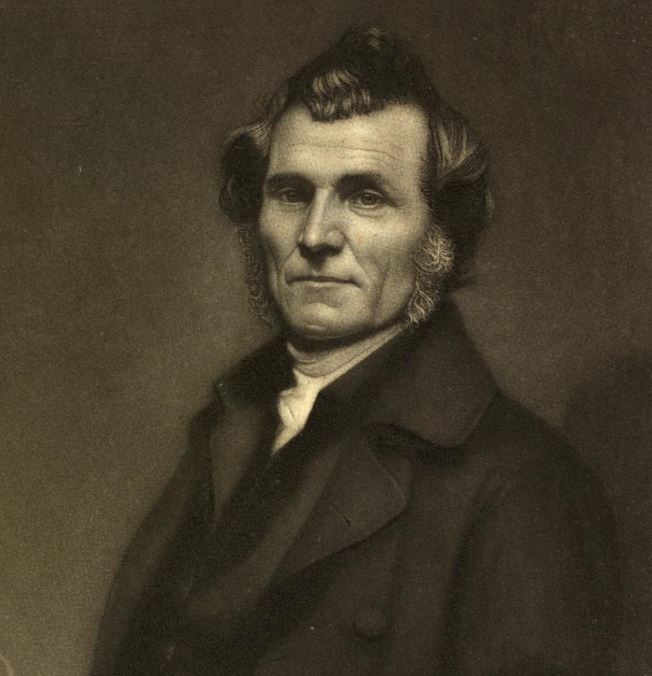
Evangelist James Caughey
Background on James Caughey
► He was born in the north of Ireland on April 9, 1810.
► His family immigrated to the USA from Ireland in the early 1820s.
► The family settled in Troy, New York.
► He was converted to Methodism during a revival in Troy in 1830.
► He was self-educated.
► He became a Methodist preacher in 1832 within the American Methodist Episcopal Church.
► In 1834, he served as a pastor of a church in Burlington, Vermont.
► In 1835, he conducted a three-month revival in Montreal, Canada.
► In 1837, he conducted another revival in Montreal, Canada, further solidifying his impact.
► In 1839, he was appointed to pastoral work in Whitehall, New York.
The Call to a Life of Devotion
During his reading of the British Methodist Bible commentator Adam Clarke, Caughey was struck by the revelation that the power of the Holy Spirit was of absolute necessity if he was ever going to have success in seeing people converted to God. This led him to immediately write out five guiding principles for his ministry:
1. The absolute necessity of the immediate influence of the Holy Ghost to impart point, power, efficacy, and success to a preached gospel.
2. The absolute necessity of praying more frequently, more fervently, more perseveringly, and more believingly, for the aid of the Holy Spirit in my ministry.
3. That my labors must be powerless, and comfortless, and valueless, without this aid…
4. I am now fully persuaded, that in proportion as the Spirit of God shall graciously support my efforts in the gospel message, I shall be successful;
5. The entire glory of all my success shall henceforth be given to the Holy Spirit.
Having these guiding principles, he also had a motto that he went by:
He that will wage war with hell, must suffer hell’s rage.
Caughey supplemented his motto with the following statement:

With these guiding principles, as well as a motto for his motivation, he set out preaching, both the law and truth, with no compromise for money, respectability, or to avoid offence.
His efforts in saving souls were also not restricted to Sundays or sermons from the pulpit.
► Throughout the week, he made house-to-house visits.
► He held special classes for new converts.
► He visited homes of the new converts who were not attending a class (small group).
1827, 1835 & 1837 Montreal Revivals
In February 1835, Caughey spent 21 days in Montreal, during which about 400 souls were converted to Christ.
Here we present a condensed outline of one event during the 1835 Montreal Revival:
► Preaching services occurred nightly for several weeks.
► One evening, the sermon was unusually direct and solemn.
► A deathlike stillness filled the building.
► As the sermon concluded, “an unexpected influence came down upon the people.”
► Rather than merely a few people responding to the sermon:
The entire congregation seemed to be moved at once, like a forest bending beneath a heavy gale. There was very little noise; no shouting or screaming; but many tears and sighs among the multitudes; and strong men bowing themselves, in penitential sorrow, before the Lord God of hosts, with earnest prayer; but evidently restraining the deep emotions which agitated their souls.
When an invitation to come forward for prayer was given:
The aisles were speedily filled, all crowding toward the communion-rails; rich and poor were seen mingling together.
This presence of God was so all-pervading that 400 people converted to Christ during Caughey’s visit. Caughey made a return visit to Montreal in 1837, and a revival ensued during that visit as well.
Montreal experienced several other visitations like this–one was in 1827, and again in 1841, during which 200 were converted to Christ.
The Call to England
During the Methodist Conference held in Schenectady, New York, in 1839, Caughey received an appointment to pastoral work in Whitehall, New York. While there he entered a dark, yet momentous time of his life. What brought this about was when he:
began seriously to reflect upon the propriety of choosing a wife.
The thoughts of marriage caused a distance to come between himself and God.
As he continued to reflect on the possibility of marriage, his heart hardened, and the darkness of his soul increased.
Caughey recognized that there must be something within himself that was out of alignment with God’s will, so he began to seek God for clarity on his condition. And on July 9, 1839, on the third day of his seeking God, he had a divine encounter, in which he said,
My soul was singularly calmed and warned by a strange visitation.
And at this moment he received an impression, or a directive from God, which he wrote down using these words:
These matters which trouble thee [seeking a wife], must be let entirely alone. The will of God is, that thou shouldst visit Europe. He shall be with thee there, and give thee many seals to thy ministry. He has provided thee with funds. Make thy arrangements accordingly; and next Conference, ask liberty from the proper authorities, and it shall be granted thee. Visit Canada first; when this is done, sail for England.
God shall be with thee there, and thou shalt have no want in all thy journeyings; and thou shalt be brought back in safety again to America.
With a calmness settling down upon his soul, he set plans in place to obey the command of God.
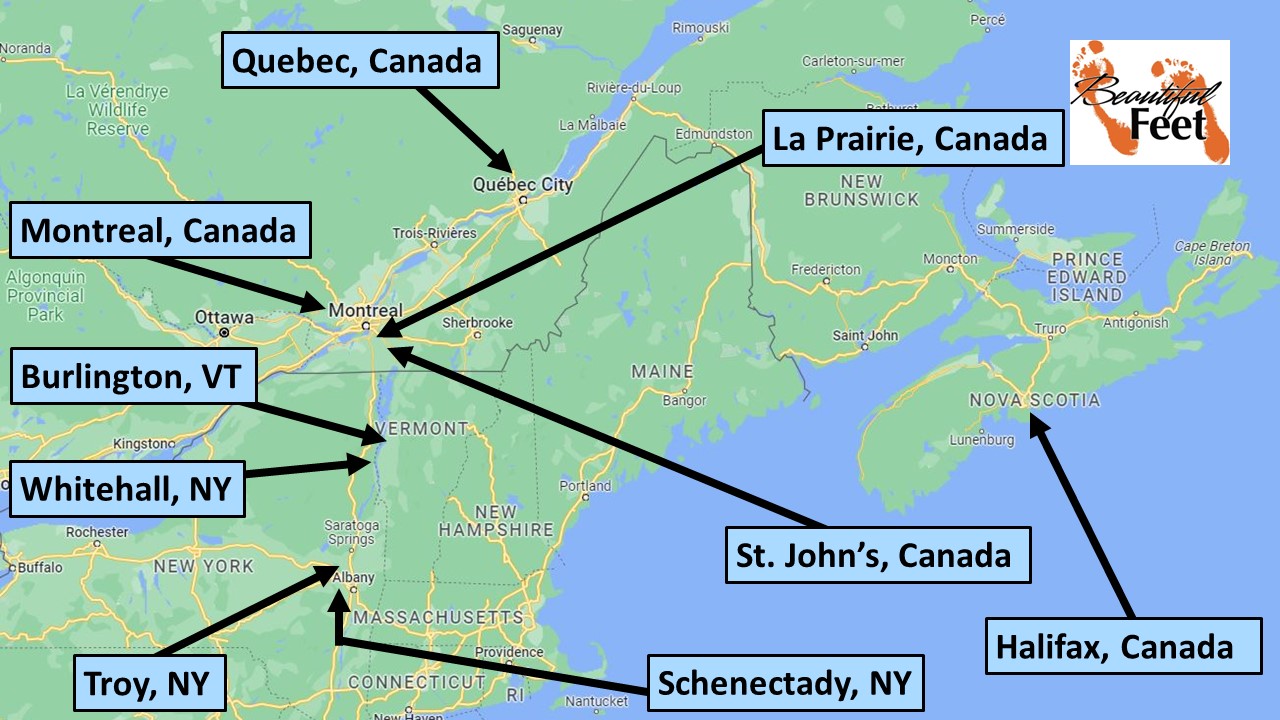
Locations mentioned in these revival accounts
Revival in and around Whitehall, New York
Waiting on God’s timing to travel to Canada and England, Caughey faithfully executed the pastoral appointment he received from Methodist Church leadership, and that was to serve the Whitehall, New York, region. There, Caughey engaged in his work with tremendous zeal, without the slightest thought of marriage. His singular ministry focus was rewarded, as he witnessed “a most powerful revival of religion in my circuit.”
Revival at St. John’s, Quebec, Canada
On June 24, 1840, in alignment with the impression he received from the Lord, he asked for and received an endorsement from the Methodist Church to make a ministry tour to Ireland and Great Britain. This tour of Great Britain was to be preceded by ministry in Canada, so departing from Burlington, Vermont, on September 17, 1840, he traveled by steamboat to St. John’s, Quebec, Canada, arriving the next morning.
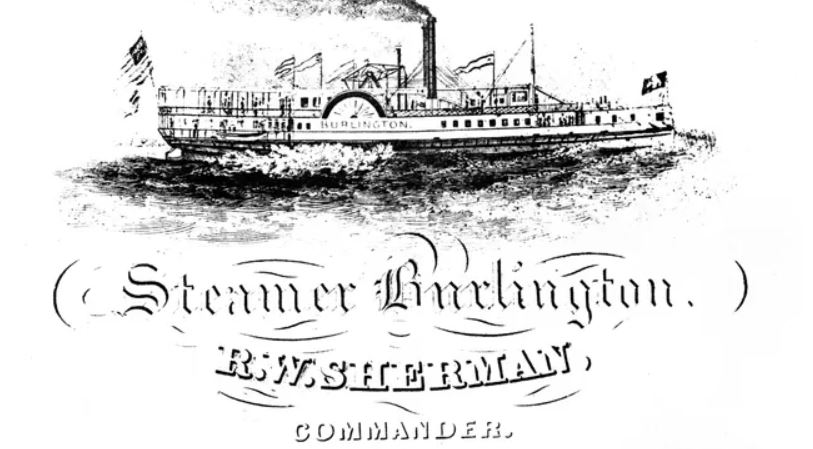
Steamboat Burlington, taken by Caughey
from Burlington to St. John’s (captain R. W. Sherman)
Conditions at St. John’s
Caughey’s first impressions of St. John’s were not promising.
► The Methodist preachers had deserted that town.
► There was no church building.
► There were no Methodist small groups meeting (classes, as they called them).
Caughey then found a family that opened their home for him to preach from, but after several nights he became highly discouraged. He sought God for guidance, and by doing so his zeal was restored. He then left the venue of preaching in homes and obtained a vacant building, previously used as a tannery, and with the help of several people, cleared it out, installed benches, and publicized meetings to the community.
After 3 weeks and 26 sermons, with people coming to Christ daily, and a revival touching the hearts of many who had grown cold, a class (small group) of 53 members was established. He and another man then went house to house, raising finances with which to build a church, and they were successful in raising nearly $700.
Caughey then appointed two class leaders for this new congregation, and on October 8, 1840, he preached his final sermon to this group at La Prairie on the bank of the St. Lawrence River. The next morning he crossed the river into Montreal.
Montreal Revival
The people of Montreal already had a relationship with Caughey, with him being part of revivals there in 1835 and 1837, wherein over 400 were converted to Christ.
During this visit Caughey recognized strong evidence that the revival was spreading in its influence, as if:
God intended to shake the whole city, but the devil created discord.
This discord led to some of the people fully supporting him, and others greatly desiring him to “depart out of their coasts.” Recognizing the futility in staying where there was no unity, he quietly embraced a previously received invitation to go to Quebec, departing Montreal on a steamboat at 9 p.m. on the night of October 27, 1840.
His efforts in Montreal were not totally unrewarded, because after spending 18 days there, preaching 18 sermons, there were 20 people who made a profession of their faith in Christ.
Quebec Revival
Several days after the departure from Montreal the steamboat arrived at the Quebec pier at 3 o’clock in the afternoon. Caughey was greeted by a man who escorted him immediately to a schoolroom that was connected to the chapel, and there he preached his first service.
After a few weeks of holding nightly services, it was evident that:
The devil threatened to drive us from the field.
Sinners were as hard as marbles.
Not being a novice with this type of opposition, Caughey had the confidence that if the congregation would persist in their prayers and efforts with him, that a breakthrough would occur.
The people of Quebec were indeed united behind him, so they continued, with Caughey preaching 10 sermons per week, in addition to other meetings for exhortations.
Caughey often used metaphors of the field of battle, by saying things like:
► “The burning truths of God were thrown into their entrenchments incessantly.”
► “Day and night they (the lost) were cannonaded (with prayers and the Word of God).
► “Many of the wicked were wounded…”
► “Sinners were cut to pieces on every hand (with conviction of their sins).”
The end result of the persistence in prayer and preaching was:
► “The devil is losing servants daily.”
► “High and low, rich and poor, learned and unlearned, old and young, are seen at the altar of God pleading for mercy.”
Results of the Quebec Revival
► About 150 were converted to Christ.
► Many at this time became members of the “Quebec Young Men’s Total Abstinence Society.”
Montreal Revival
While Caughey was in Quebec, the church leaders of Montreal settled their differences and unanimously sent word for him to return to their city. He then left Quebec on January 17, 1841, embarking on a perilous journey via sleigh, maintaining his heat by wrapping himself in buffalo skins. His sleigh experienced deep snow drifts, upturning the horse and sleigh several times, as well as traveling along the top of the frozen Batascau (Batiscan) and St. Lawrence rivers.
Along this 180-mile journey, one of the stops he made was at a small settlement. When the people learned who he was, they invited him to preach for them. When he agreed, they spread the word through the small community:
A Methodist clergyman, from the United States, had arrived, and would preach within an hour.
The people gathered, and after preaching from the 10th chapter of Acts,
An astonishing influence came down upon all present. Nothing was to be seen but weeping on every side. We fell upon our knees and poured out our souls to God. There was very little noise, but the sobbing and weeping were wonderful. I paced the floor on my knees, encouraging each trembling sinner to rely upon the atonement for the forgiveness of sins.
The next day he set off again and finally arrived in Montreal, being greeted by the people who were ready for a genuine revival.
The people of Montreal had already commenced protracted meetings in a large schoolroom underneath the chapel. Caughey encouraged them to move into the chapel and continue the nightly meetings. As they did this, attendance increased every night, and their increased commitment to prayer and fasting enhanced the conviction power of God.
The Holy Ghost descended in copious effusions (outpourings); and in a short time we were surrounded with scores of precious souls newly “born of God.”
Results of the Montreal Revival
► Tremendous unity among the ministers.
► Sermons preached: 86
► More than 200 were converted.
► One sermon was focused on the abstinence of alcohol.
► Five lectures on total abstinence from alcohol were given.
► United with the Montreal “Young Men’s Total Abstinence Society” were 1,000 people.
► There was restitution made of smuggling, defrauding, and embezzlement.
Return to New York State prior to European Departure
After completing his ministry in Canada, Caughey returned to New York state to prepare for his European voyage, and writing to one of his acquaintances from there about his Canadian ministry tour, said:
Nearly 500 souls saved in a few months!
I cannot help receiving this as a convincing proof that I have not mistaken the will of God.
Departure for England and Ireland
Caughey’s journey to England began from Whitehall, New York, going up through Montreal and Quebec, along the St. Lawrence River, to Halifax, Nova Scotia, from where he departed for Liverpool on board the steamer Britannia, departing on July 19, 1841. This all set the stage for the 1841-1847 Ireland & England Revivals.
All along his travels to Halifax from Whitehall, he would preach when opportunity presented itself, and during this journey over 20 people converted to Christ.
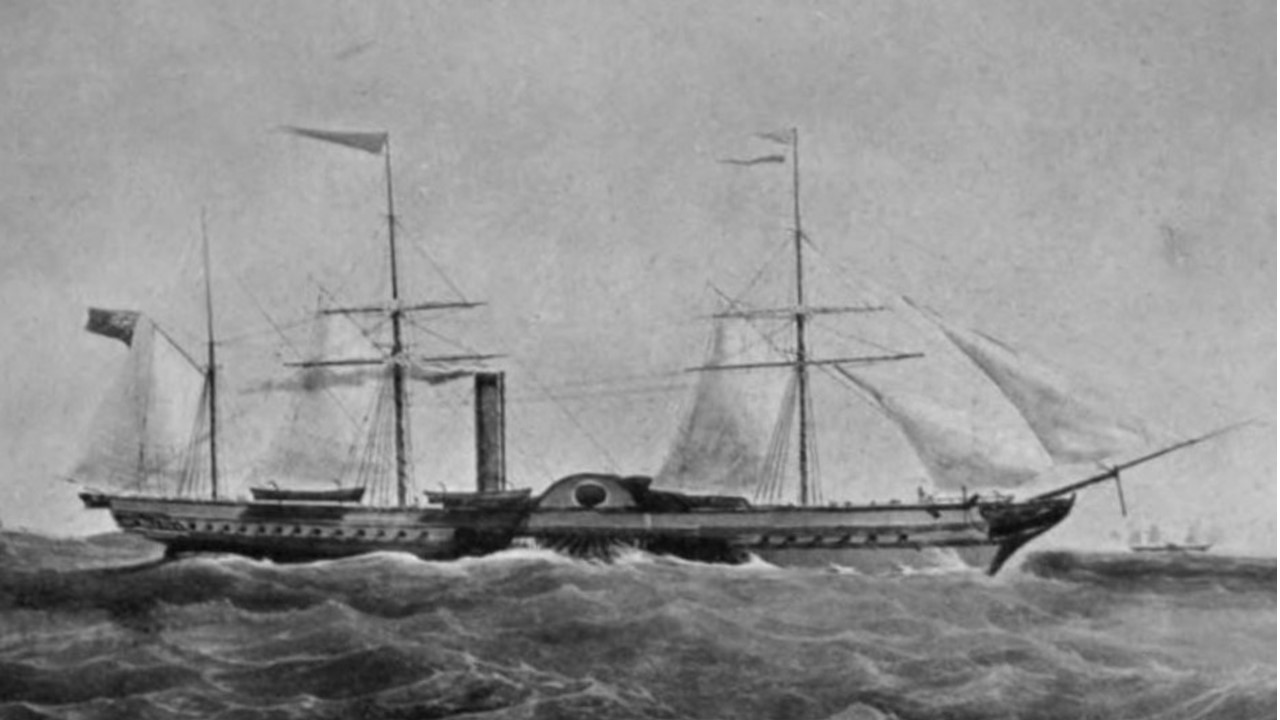
Steamboat Britannia, the one Caughey traveled on to Liverpool, England in 1841
Primary Sources
► Dictionary of Canadian Biography; Caughey, James by Peter Bush
► Dictionary of Evangelical Biography 1730-1860; Caughey, James by Richard John Carwardine
► Earnest Christianity by James Caughey
► Methodism in Earnest: The History of a Revival in Great Britain, in Which 20,000 Souls Professed Faith in Christ, and 10,000 Professed Sanctification by James Caughey
Secondary Sources
► Arrows from My Quiver by James Caughey
► Glimpses of Life in Soul-Saving by James Caughey
► Helps to a Life of Holiness and Usefulness by James Caughey
► Letters on Various Subjects by James Caughey
► Sermons & Devotionals by James Caughey by bibleportal.com
► Showers of Blessing from Clouds of Mercy by James Caughey
► The Life of General William Booth by Harold Begbie
► The Standing Doubt by James Caughey
► The Teachings of Holy Scriptures on Some Points in the Doctrines of Repentance, Faith, and Prayer by James Caughey
► The Triumph of Truth by James Caughey
Return to List of Revival Stories
Chet & Phyllis Swearingen:
Office: (260) 920-8248
romans1015@outlook.com
Beautiful Feet
P.O. Box 915
Auburn, IN 46706

